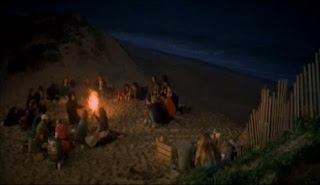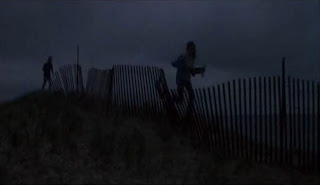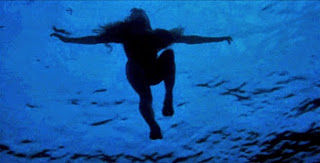Diegetic - Within the scene
Non diegetic - Added afterwards in post production
Crescendo - Build up of sound/music
Diminuendo - Gradual 'die away' of music
Sforzando - Sudden sharp sound
Jaws
In the first scene of Jaws, the music starts diegetic, then when the boy and girl leave the group the music is diminuendo because they are getting further away from the fire. When the scene was in the sharks point of view, the music started playing a crescendo when it was approaching the girl in the water. When the girl was being dragged around, the music speeds up and so does the speed of her being pulled around the water.
The Godfather
In The Godfather scene, it is diegetic until Michael leave the toilet cubical with the gun. At this point, you can hear the noise of a train as a crescendo. Michael then leaves the room and goes back to the table, it stays non diegetic.
Friday, 16 October 2015
Thursday, 8 October 2015
Main Edits
- Cut
- Dissolve
- Fade into black/white and fade up - pace can be changed on this one (often time passing)
- Just cut - object in some position but a closer shot
- Graphic match - the image of one object fades/dissolves/cuts into another similar
Alfred Hitchcock's - Psycho
In the film, when the girl is getting murdered, the shots cut quickly. The pace of the cutting creates excitement and tension. It also helps to not show the viewers that the knife isn't actually stabbing into her.
Graphic match - The camera focus' on the plughole and then fades into her eyeball.
The camera then turns and focus' on the money she stole.
Wednesday, 7 October 2015
Basic Camera Shots
Extreme close-up (ECU)

A very close shot that emphasises a reaction.
Close Up (CU)

Face and head; shows details of character.
Medium close-up (MCU)

Head and shoulders.
Medium shot (MS)

Just above or below the waistline.
Medium-long shot (MLS)

Usually just above the knees.
Long shot (LS)

Full length of figure - head to toe
Extreme long shot (ELS) of wide shot (WS)

A scenic shop that shows location, setting ect.
Over the shoulder (OTS)

Shows character over another character's shoulder.

A very close shot that emphasises a reaction.
Close Up (CU)
Face and head; shows details of character.
Medium close-up (MCU)
Head and shoulders.
Medium shot (MS)

Just above or below the waistline.
Medium-long shot (MLS)

Usually just above the knees.
Long shot (LS)
Full length of figure - head to toe
Extreme long shot (ELS) of wide shot (WS)
A scenic shop that shows location, setting ect.
Over the shoulder (OTS)

Shows character over another character's shoulder.
Friday, 2 October 2015
Mise-en-scene - Opening scene of Jaws
- Opening scene starts with the sharks p.o.v as it swims
- We hear non-diegetic low, stringed music - associated with the shark
- Camera tracks past kids around camp fire
- Fire is source of light
- Girl and boy on edge of group - outsiders
- Medium close up of the girl - bars of fence behind her - suggests she is trapped
- High angled shot makes them look vulnerable

- Boy and girl run off from the light of the fire into the darkness
- Bars all around them - suggesting they're both trapped

- Music gets quieter showing that they are getting further and further away and gets replaced with the sound of the sea - leaving other people - putting themselves in danger
- Long shot - calm - in the moonlight - peaceful
- Only sound you can hear is the buoy
- Sunset - Symbolises the girl's life ending
- Jumps from longshot to close shot - brings audience closer to the action
- Music comes back of during the sharks p.o.v under the water

- Cuts away from the action - doesn't give anything away
- Noise from the water crashing is loud to show chaos and mayhem
- Music suddenly stops when girl goes underwater - symbolises she is dead
- Cuts back to the boy to show he wasn't aware of anything

Subscribe to:
Comments (Atom)